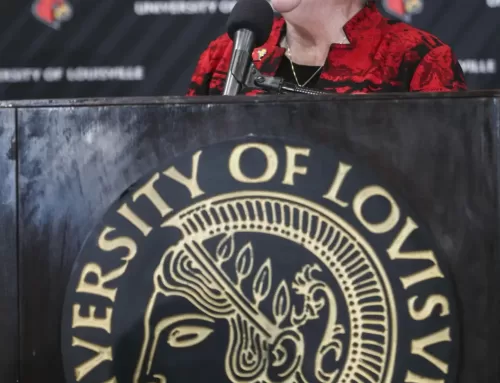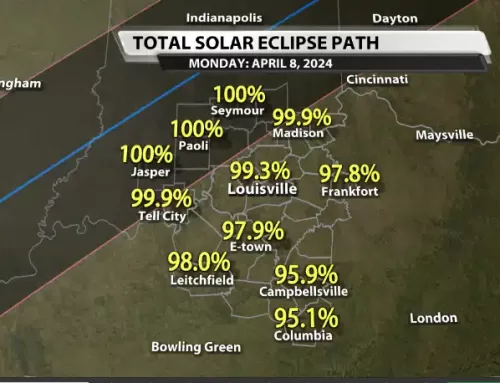By Sam Combest–
University of Louisville School of Medicine held a live-action active shooter drill as part of senior medical student Madison Kommor’s capstone project.
Kommor is on a Global Medicine track and was matched at Ohio State University for his residency according to Jill Scoggins, interim HSC communications and marketing director.
He was responsible for the entire set up and communication between responders, administration and students.
Students who partook in the drill were part of the school’s Disaster Medicine Certificate Program which is an offered elective certificate.
The drill started after a remote explosive device was detonated twice at 9:13 a.m. to simulate a bomb with a potentially hazardous gas leak.
Less than a minute after the two explosions, two mock shooters loaded with AK-47 simulators loaded with blanks entered the corridor.
The two shooters could be seen wearing bullet-proof vests, masks and carrying backpacks of ammunition.
Observers could hear radio traffic with simulated calls to police notifying them of an active shooter situation, followed by timing of responders pulling up to the scene.
Roughly 40 students acted as victims while almost 30 more took action triaging and decontaminating the victims.
From the time of the first explosion to the time of the last victim being taken to the makeshift ER, it had been approximately an hour.
University of Louisville Police Department officers arrived to the scene within six minutes of the first call for help and four more minutes before taking down the first shooter.
ULPD Chief Gary D. Lewis Jr said, “We provided support in this exercise as it was multi-prong. The primary focus was to induce the heightened sense of awareness and response for the School of Medicine and their students while also providing the framework for so many local agencies to come together and share resources.”
Dean Toni Ganzel of the School of Medicine entered the building escorted by SWAT members as an observer at 9:41 a.m. after the second suspect was escorted from the building.
“I think that it went amazing. It’s one of those things that we are preparing for something we hope and pray will never ever happen. And even as a simulated exercise it was very disconcerting to see all of the things going on and hear the gunshots and see the injuries. At the same time I was so proud of our students and the way that they all worked together. They each had their roles, and I’m sure that they learned a lot too,” said Ganzel.
Observers saw their first glimpse of victims at approximately 9:47 a.m. after students geared up for tagging, decontaminating and triaging victims.
Students could be seen covered in blood and gory makeup to exemplify real-life injuries that would be sustained in an explosion and active-shooter scenario. The makeup was done by the medical school’s Simulated Patient Program, which uses prosthetics and makeup to show students what an injury or illness would actually look like on a patient.
“This was about preparing for some type of disaster event, but this was also about educating students about the whole process of being part of something that you hope you will never be a part of. It was an amazing learning experience as well. Madison deserves such kudos for the whole orchestration and the creation of this exercise, so we’re really proud of him,” she said.
Ganzel then explained that she wasn’t aware of how the behind the scenes preparations went.
“Think about all of the groups here and the overarching administrative coordination between EMS, Fire, SWAT, FBI, it just, I can’t even imagine the number of hours that went into this preparation,” she said.
“It was very disconcerting, even though I knew this was a simulated event. When the bomb first went off, I thought, yeah okay there’s the bomb. But there was something about the gun shots that, it just, I could feel my heart rate increasing a little bit and just feeling disconcerting,” said Ganzel.
“The single most disconcerting thing to me though was when I first walked into the building as an observer and had to walk by a dead medical student. It was awful. And yet, this is why we prepare. We prepare to learn how to prevent and how to react and respond.”
Global Education Office Director, and Assistant Professor in the Department of Pediatrics, Dr. Bethany F. Hodge was the faculty sponsor for Saturday’s drill.
“Doing the exercise really brings it home; wearing the actual equipment, figuring out what your physical limitations are, dealing with people who are stressed out by the event; they’ll get pushed a little bit farther,” said Hodge.
“Just because you’re a doctor doesn’t mean you’re prepared. This is students going the extra mile so that no matter what kind of doctor they are, hopefully they can be useful.”



